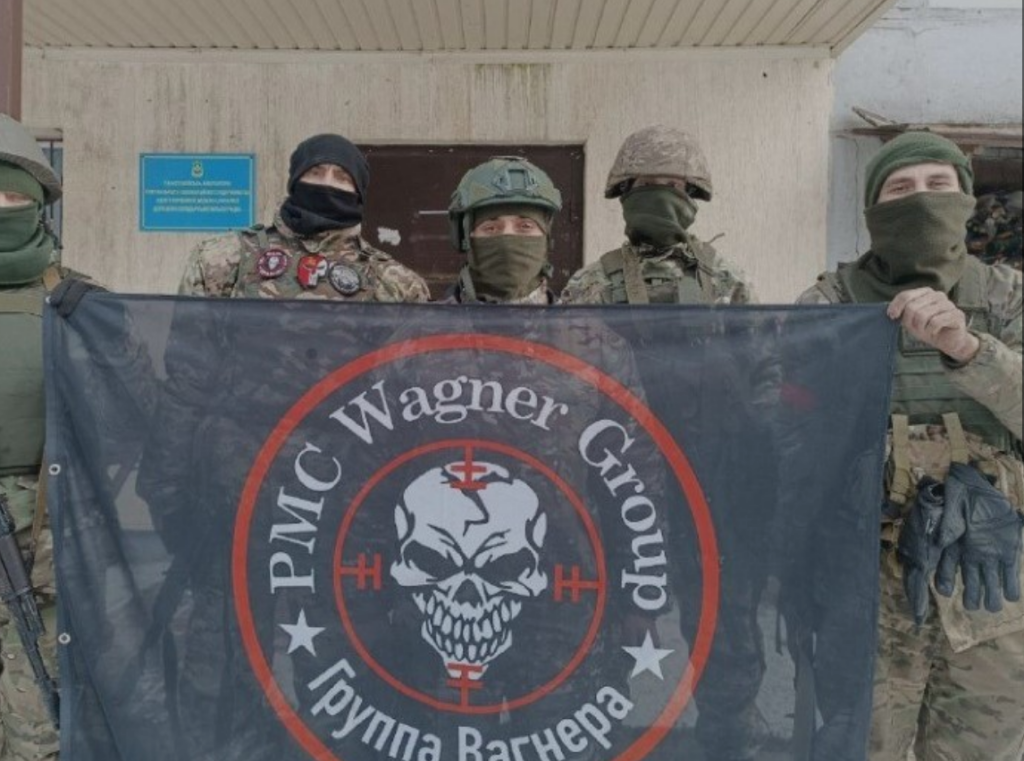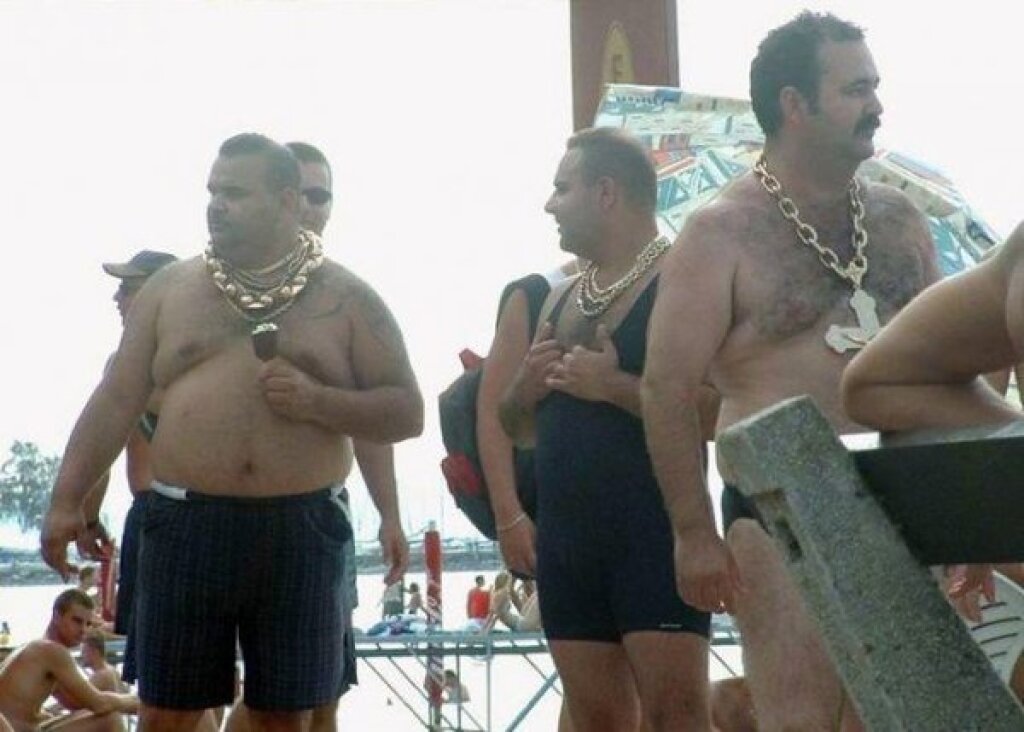The Jordan Center stands with all the people of Ukraine, Russia, and the rest of the world who oppose the Russian invasion of Ukraine. See our statement here.
A version of this post originally appeared as a policy memo on PONARS Eurasia.
Marlene Laruelle is Research Professor of International Affairs and Director of the Institute for European, Russian, and Eurasian Studies (IERES) at the George Washington University.
Richard Arnold is Associate Professor of Political Science at Muskingum University.
The consequences of Russia’s militarism are unfortunately seen daily in Ukraine, but less noticed is the paramilitarization of Russia itself. In the Russian context, the boundaries between militarization and paramilitarization are porous: key institutions such as the National Guard (Rosgvardiya) and the Youth Army (Yunarmiya), have traits from both. Yet these structures—along with the infamous Wagner private military company (PMC)—are but the tip of the metaphorical iceberg, with Russian society increasingly infected by a militant virus. Indeed, as much as a quarter of Russian forces in Ukraine are estimated to come from paramilitary organizations. Should elite infighting break out into the open, or Russia palpably lose the “Special Military Operation,” this mass paramilitarization could have enormous ramifications.
A plethora of actors
Obtaining reliable information on countries at war is always difficult—and Russia is no exception. This is especially true of paramilitary groups. Such actors usually try to stay under the radar because they bear heavy casualties on the frontlines and can be depleted rapidly. Bearing these caveats in mind, it is still possible to enumerate some actors of the informal military.
The largest is Yevgeny Prigozhin’s infamous Wagner PMC. Even in Western media, the group frequently needs no further introduction. In Ukraine, Prigozhin is estimated to have had as many as 50,000 troops (10,000 volunteers and about 40,000 convicts), but many died in the Bakhmut offensive. The war has seen a sort of formalization of the hitherto-denied Wagner PMC, with recruitment offices opening in the regions and a central Moscow office. There are also other PMCs, such as Patriot and Convoy. Convoy has connections to the Black Sea Cossack group, part of the pseudo-Cossack network in Russia (see below). Similarly, there are the well-known thugs of Ramzan Kadyrov, the Kadyrovtsy. Kadyrov himself, who uses sports as a recruitment tool and to burnish his personal image as a man of action, allegedly has designs on creating a PMC. Some of the Kadyrovtsy are also part of Viktor Zolotov’s National Guard, arguably a state structure that is still not integrated into the Russian Armed Forces.
A once-overlooked group of combatants is the pseudo- (or state organized) Cossack movement. This should be distinguished from the actual ethnic or ancestral Cossacks, who constitute one of Eurasia’s largest unrecognized nations. The number of “Cossack” troops deployed to the Ukrainian battlefront has been steadily increasing and has now reached over 17,500 (by their own reports). This formal “Cossack” movement, organized through the Cossack register created in 1995, comprises an estimated 750,000 individuals. Most “Cossack” battalions in Ukraine are from the Kuban, Don, Terek, and Orenburg hosts, but the Siberian, Irkutsk, and Yenesei hosts recently formed a volunteer battalion as well. So too have such groups represented a means of Russian consolidation of territory—new “Cossack” structures were instituted in Crimea following Russia’s annexation, and there are similar plans in Donetsk, Luhansk, Kherson, and Zaporizhzhia.
Drawing on Cossacks’ ostensible claims to be the autochthonous indigenes of the region, the Russian state seems to be relying on them to legitimate the conflict as Russia’s simple “Reconquista” of its own historical lands. This presentation ignores the Ukrainian state’s own claims to be “the Cossack nation,” a line from the country's national anthem. The institutionalization of the “Cossacks,” along with their role in patriotic education and vigilante operations (“from Kaliningrad to Vladivostok”), seems to be developing. The Cossacks run youth paramilitary training camps where attendees are taught military skills and sports centers to develop body training.
Still other paramilitary organizations are the troops of the DNR-LNR (self-proclaimed Donetsk and Luhansk People’s Republics), created in the spring of 2014 as proxies of the Russian Armed Forces in the Donbas. These groups were reinforced by the arrival of Russian nationalist volunteers (such as Rusich) and some international far-right groups, Russia’s pretense at “denazifying” Ukraine notwithstanding. They have received training, equipment, and supervision from the Russian military; some far-right groups have been preparing for war since at least the mid-2000s. After February 2022, they are the ones enlisting the majority of men aged 18-65 from both regions (the Donetsk army is said to be around 20,000 people and Luhansk 14,000—before casualties) and likely include the Union of Donbas Volunteers led by former DNR prime minister Alexander Borodai.
So too have other regions of Russia created militias. By summer 2022, depending on reports, there were between 13 and 19 regions of Russia that had officially declared they were constituting their own volunteer battalions: not just Chechnya, Tatarstan, Bashkortostan, Chuvashia, and North Ossetia-Alania, but also ethnically Russian regions like Primorski krai, Krasnoyarsk krai, Perm, Chelyabinsk, Orenburg, Nizhny-Novgorod, Kursk, etc. It remains difficult to assess how many were really created, with how many men in each. In the private sector, the government has authorized the firm Gazprom Neft to create a private security organization (not a PMC) to protect Russian energy infrastructure. Gazprom seems to be recruiting by offering better salaries than Wagner—a sign of the competition going on between the different patrons curating the paramilitary sector.
The boundaries between private militias and the Russian military are thus porous: all these mercenary troops are well integrated into the official structure of the Russian Armed Forces and sometimes receive supplies and equipment from them. They are used as offensive troops for capturing the most difficult terrain or as occupation troops that assist the main Armed Forces in the everyday management of occupied territories. They are also the ones bearing the highest death rates. It seems, for instance, that of the dead whose status has been established, more than a third are prisoners and PMC mercenaries. The rest of the fallen are regular, contracted soldiers and volunteers.
Socio-political accounting
Why are so many people willing to join paramilitary groups in Russia? The primary reason must lie in the country's limited employment prospects. The average wage in Russia is just $500 per month. De-mobilized men, frequently lacking skills beyond military ones, can earn a decent salary in such organizations. A (para)military career also comes with other rewards like social prestige and family benefits: children can attend Cossack Cadet Schools, for example. While many men are obviously not motivated to go to the frontline, some are and express feelings of achievement and recognition, finding meaning to life. Indeed, Russia’s war against Ukraine is very much a class-based war, in which provincial Russia is the one sent to die on the battlefront.
Another contributor to Russia's paramilitarization is the culture the Putin regime has created: the thousands of small grassroots clubs for military training, extreme sports, and military-patriotic education that have mushroomed all over Russia over the last ten-twenty years. Often managed by former contract servicepeople (kontraktniki) or retired military and law enforcement agency civil servants, they form a dense social fabric, especially active among the less well-off segments of the population, for whom they offer free leisure activities for children and teenagers.
Last but not least, the social background for both militarization and paramilitarization also relies on the dense networks of Cadet schools and lyceums. Based on data from 2018, these have been schooling almost 200,000 children: one quarter attends one of the 200 existing Cadet institutions (obrazovatel’nye organizatsii kadetskogo tipa), while three-quarters have Cadet classes conducted in more than 7,000 schools across the country. In addition, approximately 500,000 children are said to attend Yunarmiya activities. As for the military-industrial complex itself, it encompasses 2 million employees, which translates to 6 million people if we count families.
Traumas inherited from the Afghan War and the First Chechen War, as well as everyday violence inside the Russian army, even in peacetime, have shaped generations of Russian men. For now, we can only guess how the current war, conducted on a totally different scale than its predecessors, will reverberate within Russian society. Aftereffects will include influence not only from a few thousand Wagner-affiliated ex-prisoners who will access freedom if they survive the front, but, more importantly, hundreds of demobilized men suffering from post-traumatic stress disorder. Many of them will be unable to go back to civilian life, creating an entire generation of men waiting for more military or mercenary engagement.



